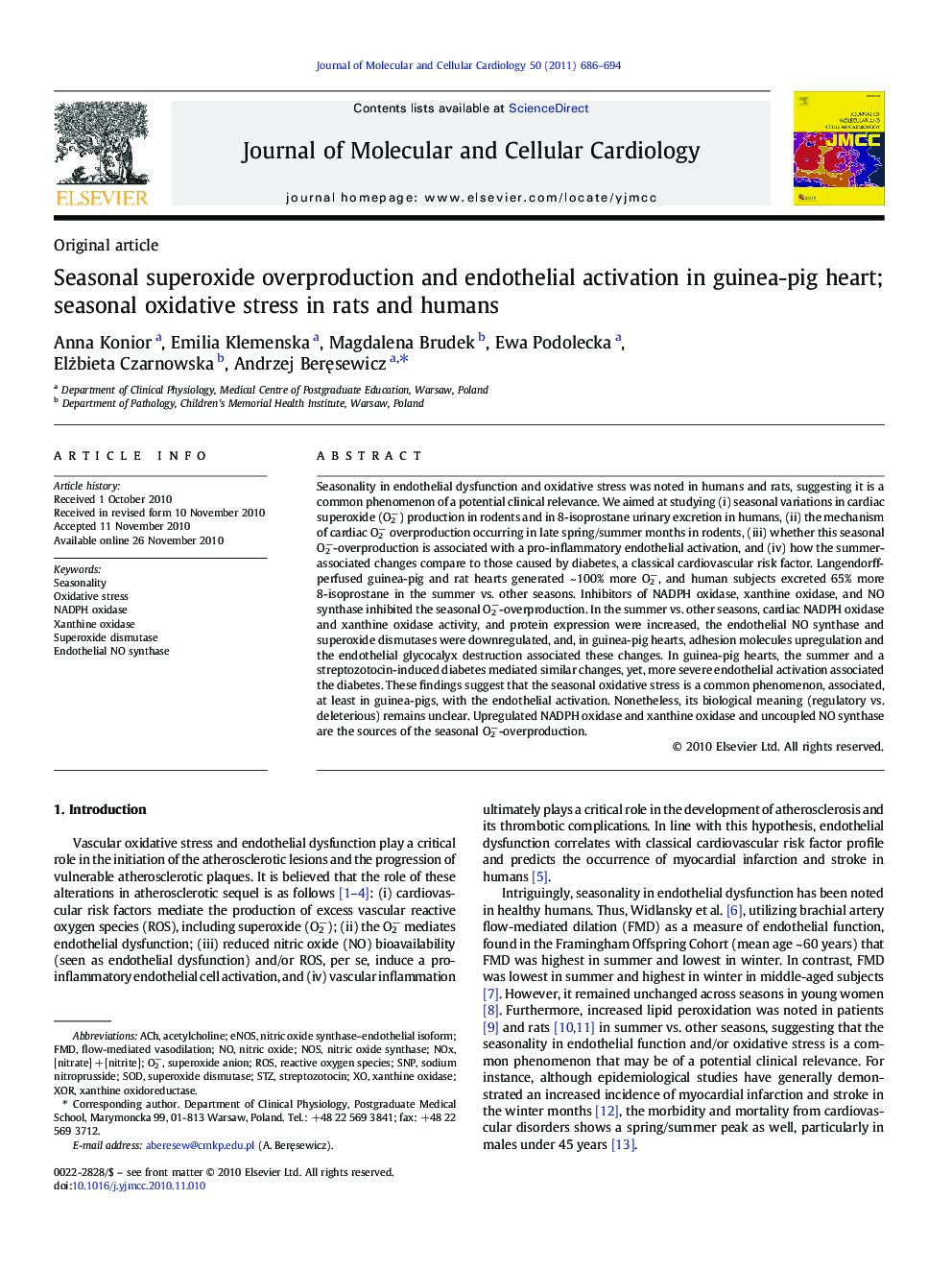| Article ID | Journal | Published Year | Pages | File Type |
|---|---|---|---|---|
| 2190866 | Journal of Molecular and Cellular Cardiology | 2011 | 9 Pages |
Seasonality in endothelial dysfunction and oxidative stress was noted in humans and rats, suggesting it is a common phenomenon of a potential clinical relevance. We aimed at studying (i) seasonal variations in cardiac superoxide (O2−) production in rodents and in 8-isoprostane urinary excretion in humans, (ii) the mechanism of cardiac O2− overproduction occurring in late spring/summer months in rodents, (iii) whether this seasonal O2−-overproduction is associated with a pro-inflammatory endothelial activation, and (iv) how the summer-associated changes compare to those caused by diabetes, a classical cardiovascular risk factor.Langendorff-perfused guinea-pig and rat hearts generated ~ 100% more O2−, and human subjects excreted 65% more 8-isoprostane in the summer vs. other seasons. Inhibitors of NADPH oxidase, xanthine oxidase, and NO synthase inhibited the seasonal O2−-overproduction. In the summer vs. other seasons, cardiac NADPH oxidase and xanthine oxidase activity, and protein expression were increased, the endothelial NO synthase and superoxide dismutases were downregulated, and, in guinea-pig hearts, adhesion molecules upregulation and the endothelial glycocalyx destruction associated these changes. In guinea-pig hearts, the summer and a streptozotocin-induced diabetes mediated similar changes, yet, more severe endothelial activation associated the diabetes.These findings suggest that the seasonal oxidative stress is a common phenomenon, associated, at least in guinea-pigs, with the endothelial activation. Nonetheless, its biological meaning (regulatory vs. deleterious) remains unclear. Upregulated NADPH oxidase and xanthine oxidase and uncoupled NO synthase are the sources of the seasonal O2−-overproduction.
Research highlights► Guinea-pig and rat hearts generate more O2− in the summer vs. other seasons. ► NADPH and xanthine oxidases and NO synthase are the sources of the seasonal O2− overproduction. ► Endothelial cell activation associates the seasonal O2− overproduction. ► Young healthy humans excrete more 8-isoprostane in the summer vs. other seasons.
